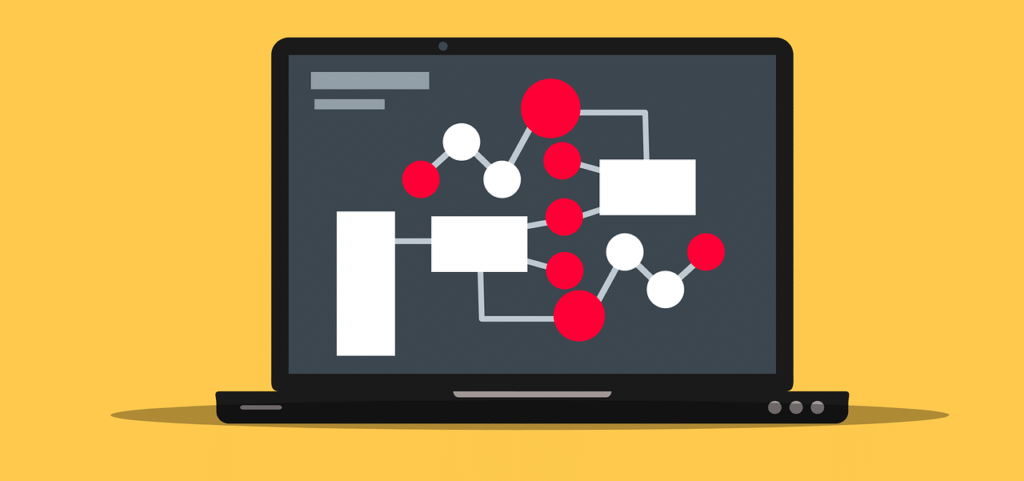
Algorithmic trading, often called algo trading, involves using computer algorithms – predefined sequences of steps – to automate trading decisions. These algorithms follow specific rules set by the programmer, enabling trades to be executed without human intervention.
In today’s fast-paced financial markets, where decisions are made on multiple assets every second, algorithmic trading has become essential. It allows traders to react quickly to market changes, reduce errors, and execute large orders efficiently.
Algorithmic trading has been around since the 1990s, initially in listed derivatives, before expanding to equities after significant market innovations such as decimalisation and the FIX protocol. The rise of electronic trading has shifted investor behavior, favouring rapid, rule-based trades over traditional long-term stock holding.
Why Use Algorithmic Trading?
Algorithms are developed to identify potentially favourable trading opportunities by scanning market prices, volumes, and other data points faster than any human can. Firms such as Hedge funds and Investment Banks invest heavily in hardware and software to reduce latency and gain a competitive edge, often deploying secretive trading systems like “Stealth” or “Iceberg” to mask their strategies.
Building your own trading algorithm requires understanding several core parameters that influence decision-making:
| Parameter | Description |
|---|---|
| Price Triggers | Your algorithm needs a price target to decide when to buy or sell an asset. It scans the market continuously to find the best price matching your criteria. |
| Transaction Costs | Trading fees, commissions, taxes, and market impact costs must be factored in. Fewer large trades generally minimise costs compared to many small trades. |
| Size and Liquidity | Large orders can move the market price. Algorithms often break orders into smaller “waves” to avoid disturbing liquidity and revealing their strategy. |
| Timing of Execution | Execution timing is crucial. For instance, many large trades happen early or late in the trading day. Using metrics like Time Weighted Average Price (TWAP) helps spread out trades to minimise impact. |
| Fill Ratio | This is the likelihood an order will be fully executed. Highly liquid assets have higher fill ratios; less liquid ones might require more time or partial fills. |
The trading algorithm needs to make sure to perform the following key functions:
| Function | Description |
|---|---|
| Data Analysis | Process real-time and historical market data quickly. |
| Trade Matching | Find buyers/sellers matching your price and size. |
| Trade Execution | Enter the market to complete trades at desired prices. |
| Decision Analysis | Evaluate and adapt decisions based on market patterns (especially for machine learning models). |
| Smart Order Routing | Search multiple trading venues to find the best price and liquidity. |
Types of Algorithmic Trading Strategies
Impact-Driven Strategies
Aim to minimise market impact and hide trading intent. Common examples:
| Strategy | Description |
|---|---|
| Volume Weighted Average Price (VWAP) | Trades spread throughout the day based on volume. |
| Time Weighted Average Price (TWAP) | Evenly splits orders over time. |
| Percent of Volume (POV) | Trades only a set percentage of market volume. |
Cost-Driven Strategies
Focus on minimising transaction costs, balancing speed with execution efficiency. Examples include:
| Strategy | Description |
|---|---|
| Implementation Shortfall | Reduces the difference between actual execution price and benchmark price. |
| Market Close Strategy | Executes trades near market close to match closing prices. |
Opportunistic Strategies
Exploit favourable price movements and liquidity. Examples include:
| Strategy | Description |
|---|---|
| Price Inline Algorithms | Adapt trade execution based on price deviations from benchmarks. |
| Liquidity-Driven Algorithms | Search multiple venues for hidden liquidity in illiquid markets. |
| Pairs Trading | Buy and sell related assets simultaneously to capture arbitrage opportunities. |
High-Frequency Trading (HFT)
A subset of algorithmic trading focusing on exploiting tiny, short-lived price inefficiencies at very high speeds, often with no regard to fundamental analysis.
Risks of Building Your Own Trading Algorithm
While automated trading offers many advantages, it also comes with significant risks:
| Risk Factor | Description |
|---|---|
| Black Swan Events | Algorithms often lack the flexibility to handle unexpected market shocks. |
| Overfitting | Algorithms tuned too tightly to past data may fail in live markets. |
| System Failures | Hardware or software bugs can lead to costly mistakes. |
| Increased Volatility | Some argue that algorithms have contributed to market instability. |
Implementing safeguards like real-time risk monitoring, news sentiment analysis, and stop-loss mechanisms is essential to mitigate these risks
Algorithmic trading represents the future of financial markets – efficient, fast, and data-driven. Whether you are a retail trader or an institutional investor, understanding how algorithms work and how to create your own can unlock new opportunities and efficiencies. Just be mindful of the risks and commit to continuous learning and improvement.